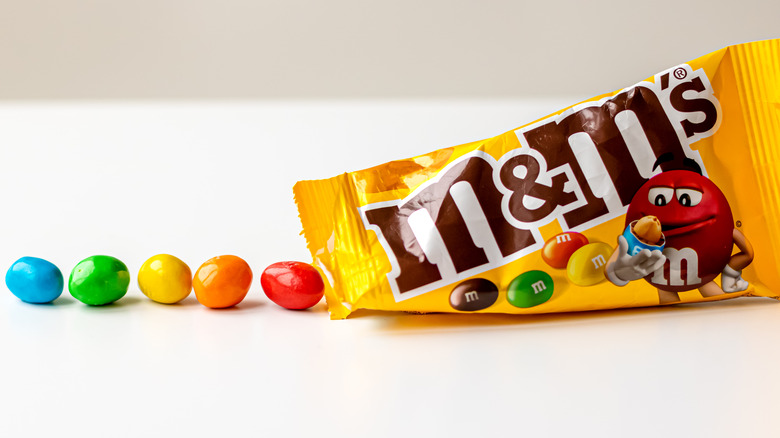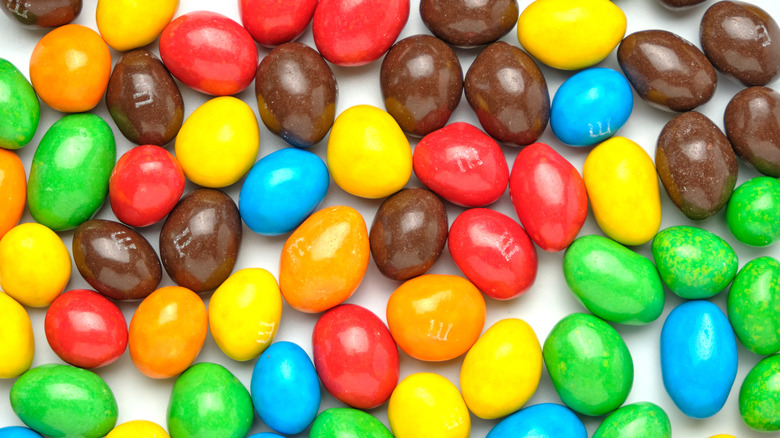Peanut M&M's Lacked The Iconic Colorful Look When They Debuted
There is a scene in the 2001 romantic comedy "The Wedding Planner" when Matthew McConaughey's character Steve, explains to Jennifer Lopez's character Mary that he only eats brown M&M candies because he figures that the color has less artificial coloring in them since chocolate is already brown. But, if the film had been made six years earlier, would Steve have thrown away the light brown M&M's, too?
If you've forgotten or had no idea, light brown or tan was an actual M&M color all the way up until 1995. In fact, the company let the public decide that year which color should replace it, giving them a choice between blue, purple, and pink. Of course, blue was the winner. However, when the candy-coated chocolates debuted in 1941, they came in five colors — brown, yellow, green, red, and purple.
In 1949, purple was replaced by light brown which stayed in place until it gave way to blue nearly 50 years later. In 1954, M&M's added their iconic flavor, the Peanut M&M. When you open a bag of these today you get the same rainbow of colors that match the originals, but this wasn't the case when they first hit the shelves. In fact, Peanut M&M's were released in a single color only. No one really knows why, but perhaps the color chosen most closely resembled the color of the roasted peanut inside.
A lighter shade of brown
The year 1954 was a big one for M&M's. During that time, the color of the "M" printed on every candy changed from black to white and the tagline, "Melts in your mouth, not in your hand" first made its appearance. Of course, the first bags of Peanut M&M's were also released, not in the bright, cheery colors consumers are used to, but in the color tan, and tan only.
M&M fans know it's not unusual for the candies to go through color swaps. The button-sized sweets go through wardrobe changes for holidays every year. Easter-themed bags feature pastel colors, and Christmas packages contain red and green, but you never see bags full of a sole color unless they've been specially ordered. It wasn't until 1960, a full six years later, that the company decided to add yellow, red, and green colors to the Peanut M&M line up which eventually went on to match the colors of the original candies.
Today, other popular varieties of M&M's including peanut butter, pretzel, and almond, all bear the same colors as plain and Peanut M&M's. There is no telling if tan M&M's will ever make a comeback. It certainly doesn't compliment the rainbow scheme of the other hues, but then again, neither does the dark brown color. You know, the one with presumably less artificial coloring.

